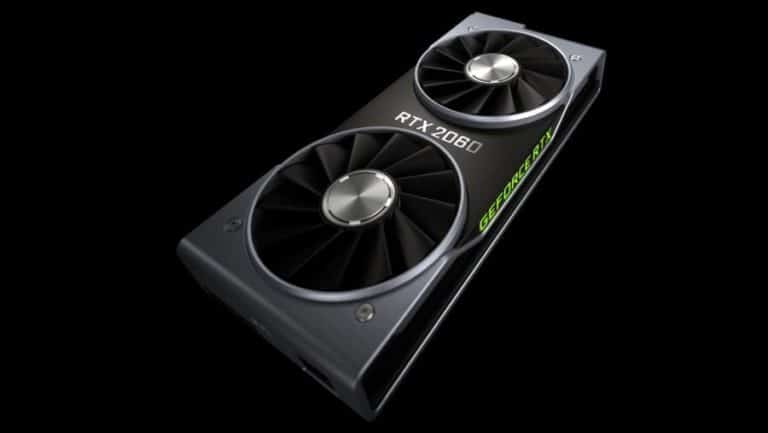At CES, Nvidia-CEO is presenting Jensen Huang with RTX graphics for laptops. Not only will the existing RTX 2080 have a mobile version, Huang will immediately introduce a brand new RTX 2060 that will be used in desktops as well as in laptops.
Last year, Nvidia introduced the first offspring of its new RTX lineup. RTX replaces house name GTX, and brings real-time ray-tracing to the consumer. Ry-tracing fully simulates light rays and the path they take in a graphical scene, creating much more realistic reflections and shadows. Ray tracing is an essential part of, for example, qualitative CGI in films, and the real-time application of the technology in consumer hardware was a minor revolution.
Midrange RTX
Following the introduction of high-end desktop gpus such as the GeForce RTX 2080, 2080 Ti and 2070, Nvidia is now fully engaged in the midrange segment with the RTX 2060. The spiritual successor to the GTX 1060 must deliver up to 50 percent better performance on the desktop. In front of it is a Turing chip with 1,920 CUDA scores under the bonnet.
The basic clock speed is 1,380 MHz, with a boost to 1,680 MHz. 6GB of 14Gbps-GDDR6 memory is accessible via a 192-bit interface (336GBps). The card must perform up to 50 percent better than its predecessor, the GTX 1060. In addition, this RTX also has natural ray-tracing on board. Nvidia also supplies the CPU with 240 tensor cores, giving it a deep learning capacity of up to 52 terafloops. We don’t know the price in euro yet, but in the US the card will cost $349. She’ll be in the store on January 15th.
Ray tracing in the laptop
More interesting than the announcement of this midrange card is the unveiling of a brand new laptop portfolio. The RTX 2080, RTX 2070 and RTX 2060 will be available this year and more than 40 laptops. Nvidia is putting the full-fledged desktop versions of the cards in laptops, using technology that it introduced last year under the name Max-Q. With Max-Q, the chips are clocked slightly lower than their desktop versions to meet the thermal limitations of a laptop chassis. Nvidia works closely with all laptop manufacturers to ensure that the cooling in the laptop is optimal, so that the chips perform closely in the turn of their desktop brothers.
Compared to a GTX 1080 Max-Q, a RTX 2080 Max-Q should be about 20 percent better. It remains to be seen what the impact of the ray-tracing capabilities will be on performance and the thermal situation. In any case, it’s great that Nvidia manages to stuff the 2,944 Cuda cores-counting card with its 10.1 TFLOPs of computing power into a laptop.
The first RTX laptops appear on shop shelves from the end of the month. Acer, Asus, Dell, HP, Lenovo, MSI, Gigabyte and others have copies ready.
Related: Chromebooks in Belgium ready for exponential growth
This news article was automatically translated from Dutch to give Techzine.eu a head start. All news articles after September 1, 2019 are written in native English and NOT translated. All our background stories are written in native English as well. For more information read our launch article.